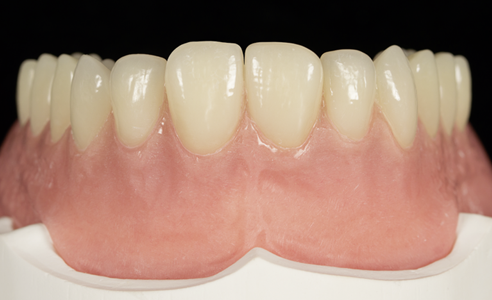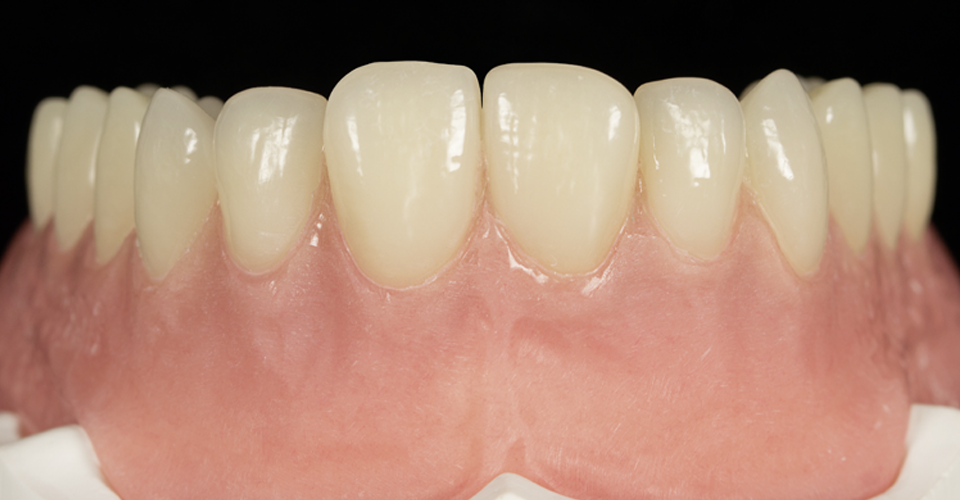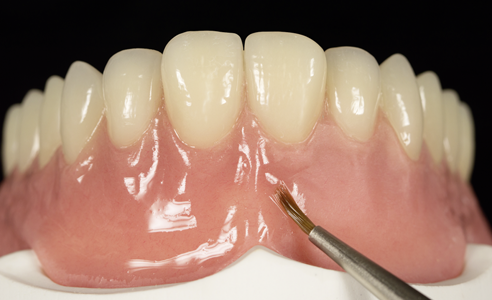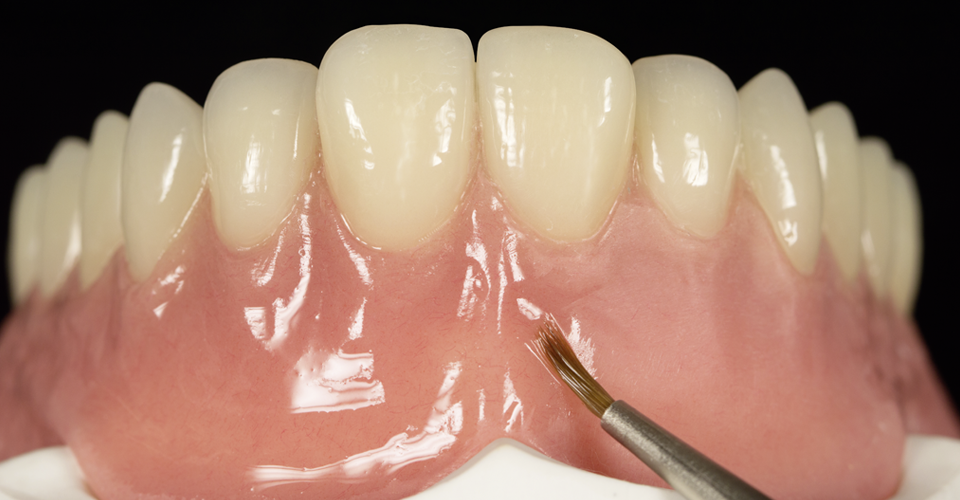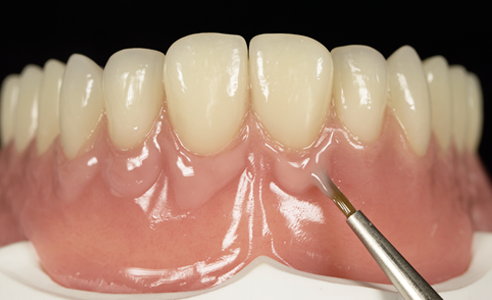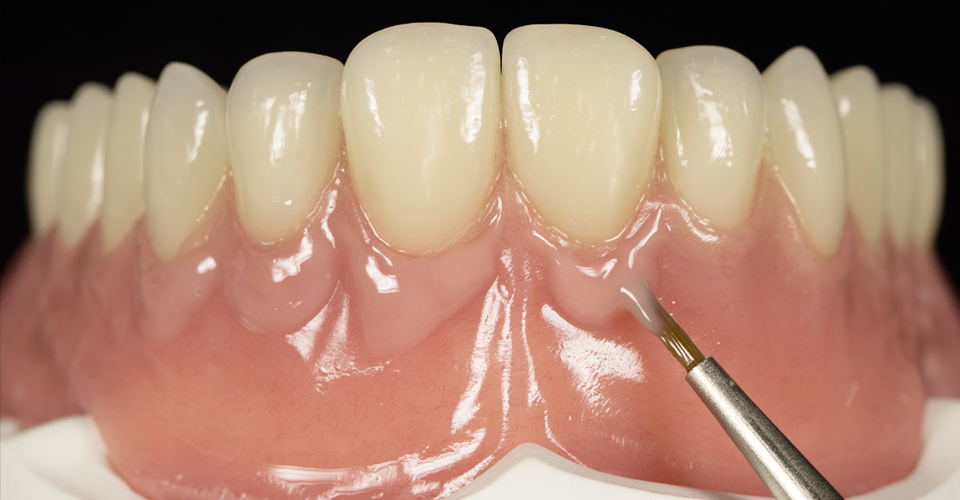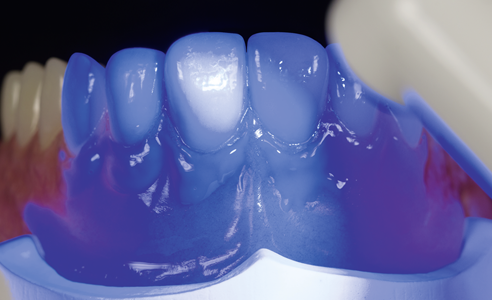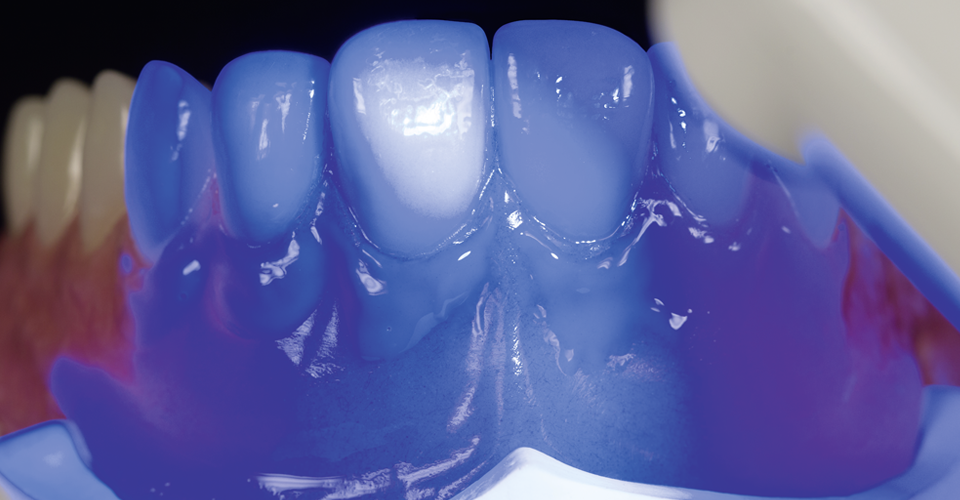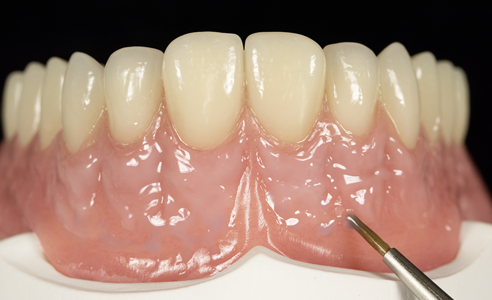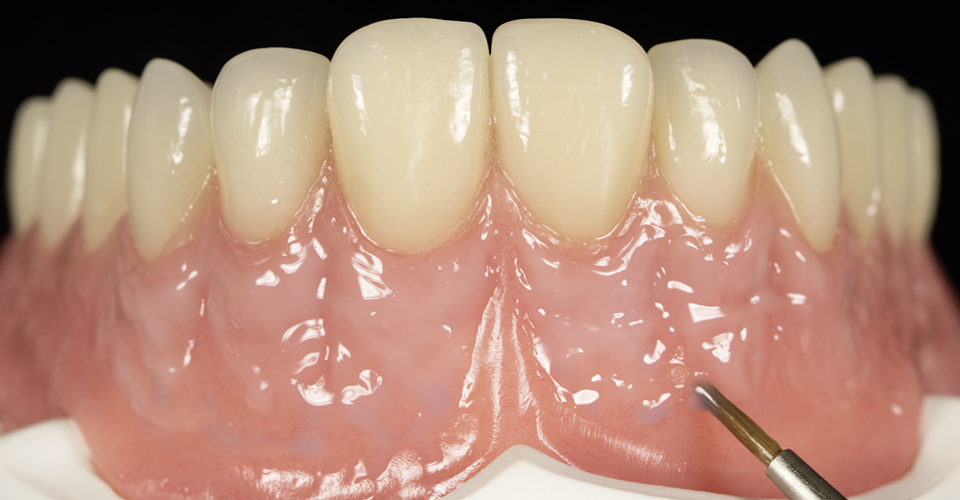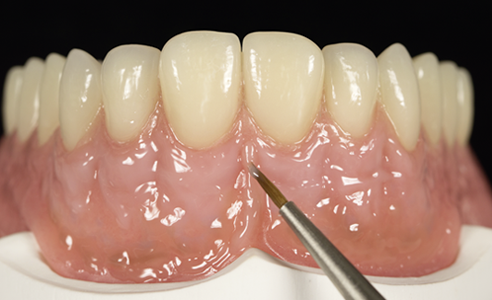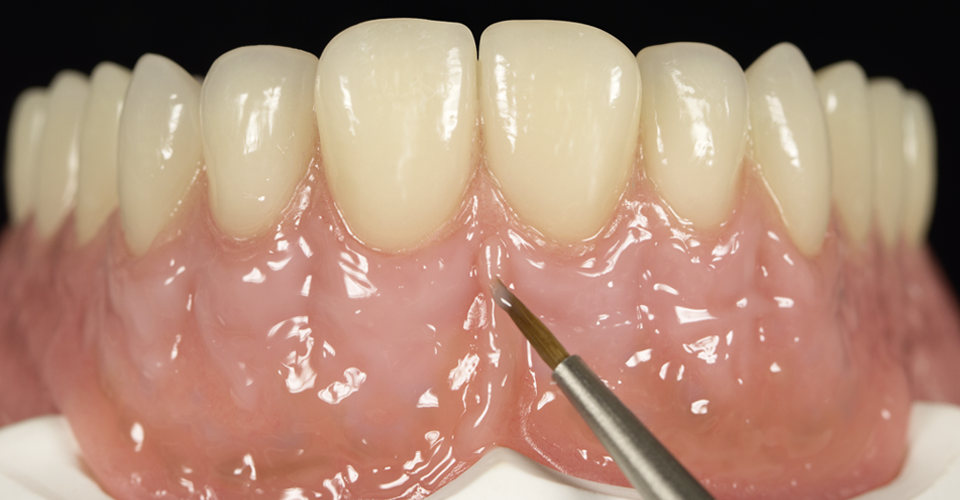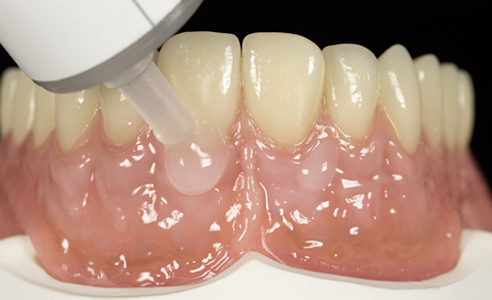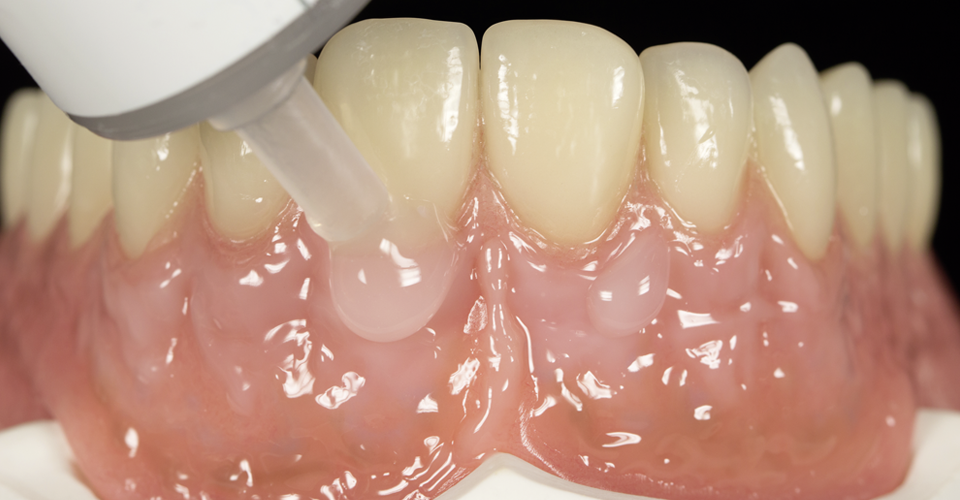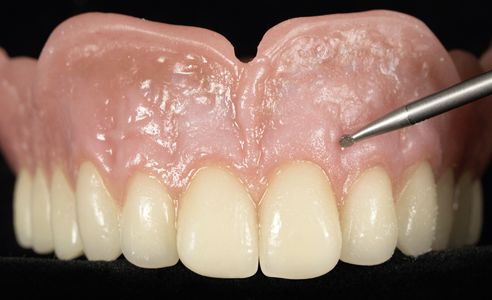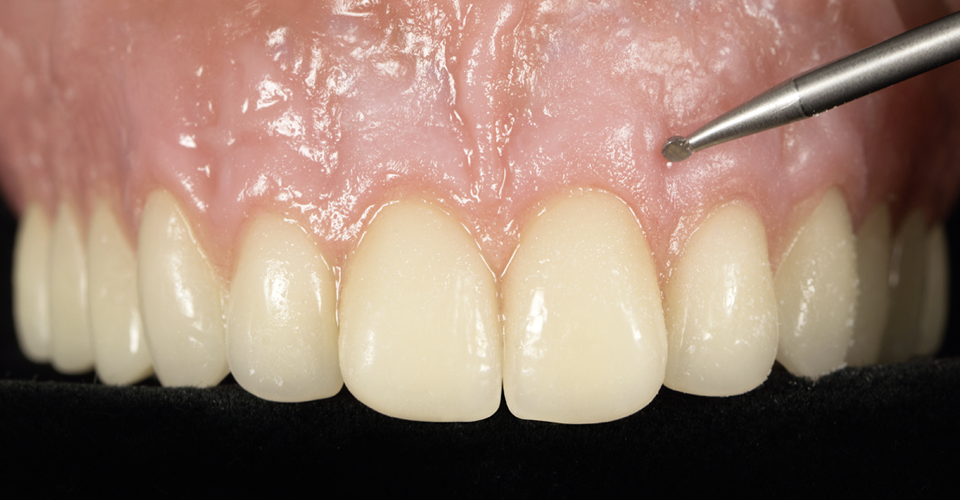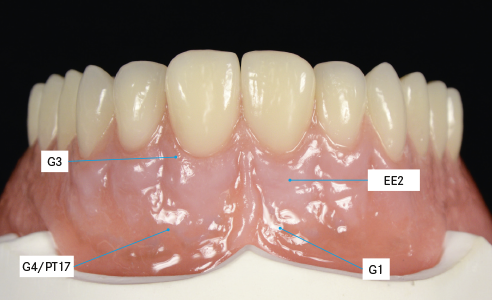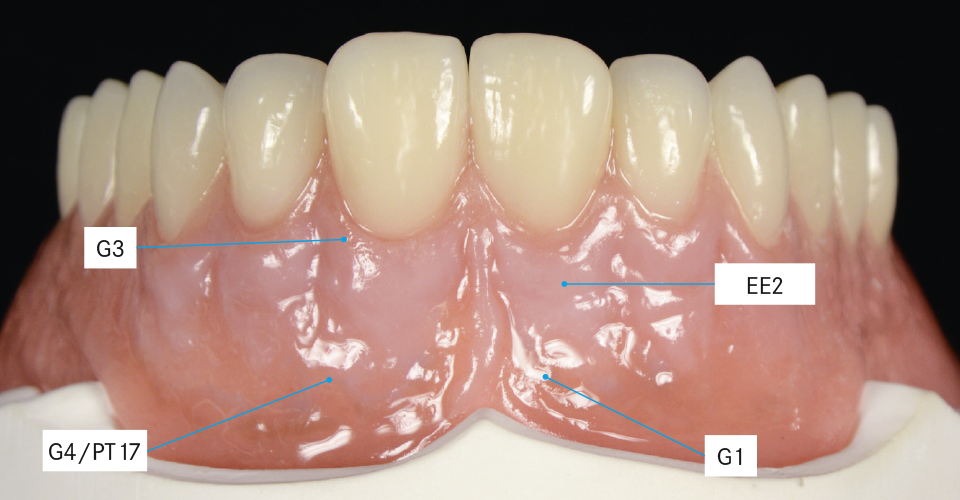Reproduction of the gingiva: essential steps for customization
Each gingiva has individual characteristic shades and surface structures. In the total and partial denture restoration of patients with a high smile line, it is particularly important to reproduce the individual characteristics of the gingiva; otherwise, the prosthesis is not harmoniously integrated into the oral appearance. Flowable, light-curing veneering composite allows a rational individualization in these cases. In the following report, Martina Rosenbusch, dental technician (Bad Säckingen, Germany) explains how the vestibular labial shield of a prosthesis can be efficiently customized with VITA VM LC flow (VITA Zahnfabrik, Bad Säckingen, Germany).
1. Basics and conditioning
In the customization of a denture base using the classical filling method, the inlay of various synthetic materials for dentures cannot be extensively controlled. On the other hand, customization with the flowable but stable VITA VM LC flow veneering composite offers the advantage that the material can be applied precisely and in a completed targeted manner. However, prior to customization, the polymerized base must be pretreated. For this purpose, the surfaces are first roughened with a cross-cut carbide bur and then sandblasted with aluminum oxide (50 microns, 2.0 bar). For a good chemical bond, a bonding agent (VITA VM LC MODELING LIQUID) is also applied in the last step for 30 to 60 seconds.
2. Individualization using composite
In this case, customization was done using VITA VM LC flow and the PAINT line of products. To reproduce the alveolar processes in the cervical region, the pink-colored GINGIVA 3 (G3) material was applied underneath. To imitate the underlying, attached gingiva, the light, pastel-colored EFFECT ENAMEL 2 (EE2) was applied. The transition to the free mucosa was designed with dark G4 (brownish red). Afterwards, it was characterized with bluish VITA VM LC PAINT 17 and affixed with translucent WINDOW after intermediate curing to imitate delicate vessel lines. The labial frenulum was finally reconstructed with light G1 (dusky pink). This was followed by final polymerization in the polymerization device with VM LC GEL to avoid an inhibition layer. Since VITA VM LC flow can be applied precisely, no shape corrections were necessary.
3. Finalization and final result
Before the final polishing, texture was incorporated with the stippling instrument. Then the polishing was done with silicone polishers, goat hair brush, wool swab, felt wheel and suitable polishing pastes. With the procedure described here, the gingiva can be faithfully reproduced within 30 to 40 minutes. As a result, the individualized maxillary prosthesis with VITAPAN EXCELL anterior teeth makes a strong impression with its balanced harmony in red-white esthetics.
Report 07/17



